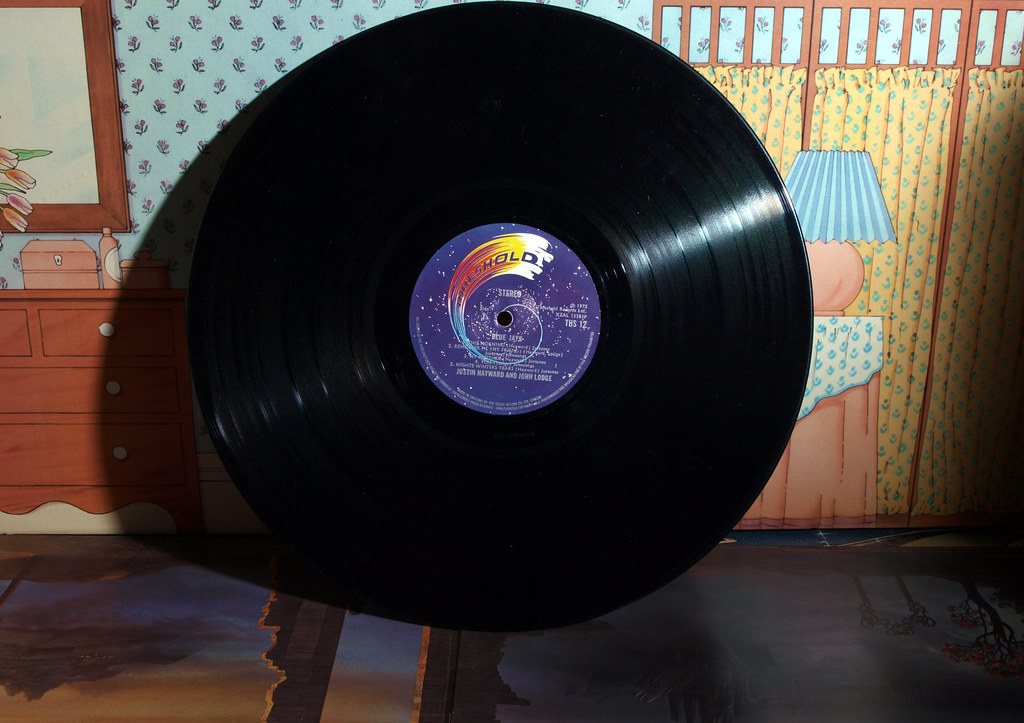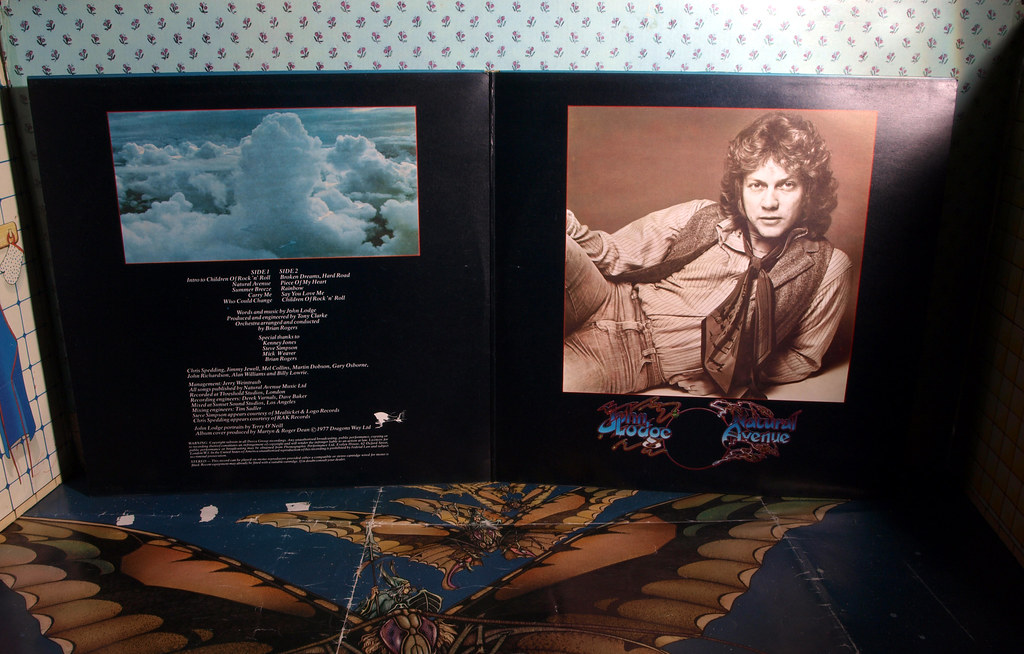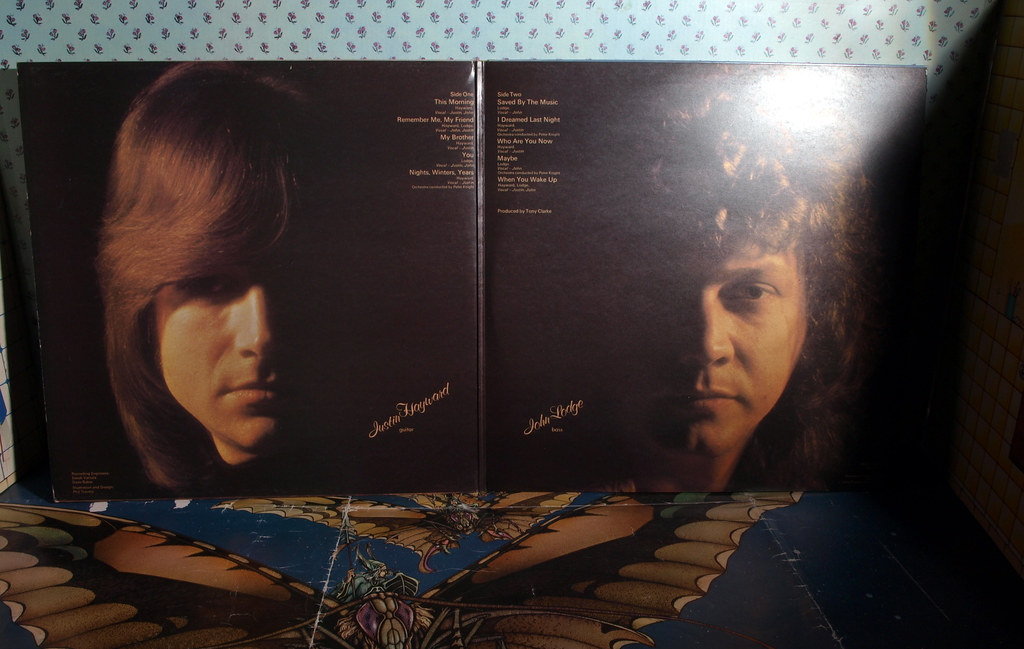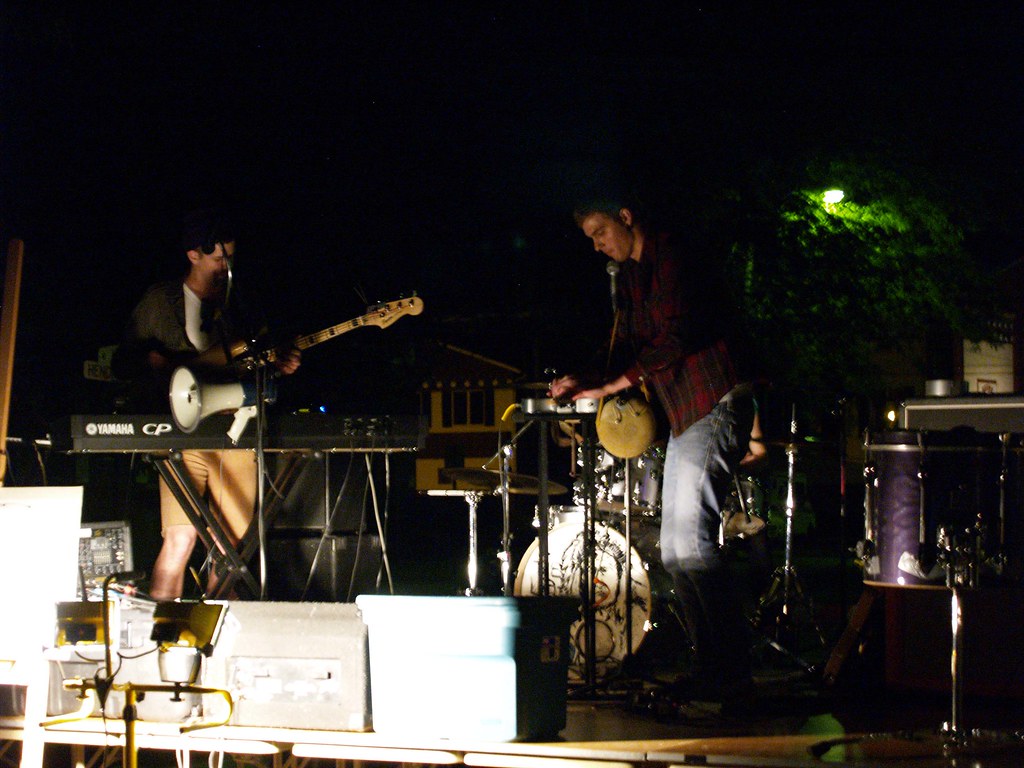
The world of rock music recently mourned the loss of John Lodge, the esteemed singer and bassist who was an indispensable architect of The Moody Blues’ distinctive sound for over half a century. Lodge, described by his family as a “massive-hearted man,” passed away “suddenly and unexpectedly” at the age of 82 on October 10, 2025, leaving behind a profound legacy that spans groundbreaking albums, iconic hits, and a life deeply rooted in both his passion for music and his unwavering commitment to his loved ones. His departure marks another significant moment for fans of the symphonic progressive rock pioneers, following the recent passing of other key band members.
Lodge’s career was a testament to enduring artistry and a remarkable ability to evolve within the ever-changing landscape of popular music. From the band’s early psychedelic explorations to its later embrace of pop-oriented sounds, his sturdy bass lines and distinctive vocals were a constant, anchoring the majestic arrangements that defined The Moody Blues. This article delves into the various facets of his illustrious life, commemorating a musician whose contributions resonated globally and whose personal values shone brightly throughout his public life.
Through a series of detailed reflections, we will explore the pivotal moments and defining characteristics of John Lodge’s journey. We will examine his early life, his transformative entry into The Moody Blues, his essential role in shaping the band’s sound, and his significant contributions as a songwriter. This comprehensive look aims to honor the memory of a revered artist, whose influence on progressive rock and beyond remains indelible.

1. **A Life’s Final Chapter: The Peaceful Passing of a Rock Icon**John Lodge, the revered bassist and vocalist for The Moody Blues, “peacefully slipped away surrounded by his loved ones and the sounds of The Everly Brothers and Buddy Holly,” his family confirmed in a poignant statement released on October 10, 2025. His death, described as “suddenly and unexpectedly” at the age of 82, marked the end of a remarkable life that profoundly shaped the landscape of rock music and touched countless individuals. The announcement was made “with the deepest sadness,” underscoring the profound loss felt by those closest to him.
The family’s statement, shared via the musician’s representative, Sharon Chevin, and widely disseminated, emphasized the core values that guided Lodge throughout his life. “As anyone who knew this massive-hearted man knows, it was his enduring love of his wife, Kirsten, and his family, that was the most important thing to him, followed by his passion for music, and his faith,” the statement read. This declaration offered a glimpse into the private world of a public figure, revealing a man whose priorities were firmly anchored in personal connection and spiritual conviction.
The sentiment of loss was palpable in the family’s words, yet it was also tempered with a sense of peace and a reflection on his enduring spirit. They expressed, “We will forever miss his love, smile, kindness, and his absolute and never-ending support. We are heartbroken, but will walk forwards into peace surrounded by the love he had for each of us.” The family also referenced Lodge’s customary closing remarks at his shows, “As John would always say at the end of the show, thank you for keeping the faith,” a fitting farewell from a man whose faith was so central to his identity.
The family further requested privacy during this difficult time, stating they would not be making “any further comments.” Instead, they suggested that “John’s song ’Whispering Angels’” would serve as a fitting soundtrack for remembrance, a final musical gesture from an “incredible man who touched so many lives.” The cause of Lodge’s death was not provided in the family’s public statements.
Read more about: Beyond the Starlight: Robert Redford’s Untold Heartbreak and the Women Who Shaped His Life

2. **Formative Years: The Birmingham Roots of a Musical Journey**John Lodge was born in Erdington, a district of Birmingham, England, in 1943, laying the foundation for a life steeped in music and community. His early education took place at Birches Green Junior School, followed by attendance at Central Grammar School, institutions that would have contributed to his intellectual development before his immersion in the world of advanced technology and, ultimately, music. Birmingham, a city with a rich musical heritage, undoubtedly played a role in nurturing his nascent talents and interests.
His academic path continued at the Birmingham College Of Advanced Technology, indicating an initial inclination towards a technical field. However, it was the burgeoning rock and roll scene of the early 1960s that truly captivated Lodge, steering his professional trajectory firmly towards music. This era was a vibrant period for British music, and Lodge, like many of his contemporaries, was drawn to the electric energy and innovative sounds that were sweeping across the nation and influencing global culture.
Lodge began playing in various Birmingham bands during the early 1960s, a crucial period of development for any aspiring musician. It was during this time that he crossed paths with Ray Thomas, who would later become a founding member of The Moody Blues. These early experiences provided Lodge with invaluable stage presence, technical skill, and collaborative experience, honing the abilities that would define his professional career. The local music scene served as a vital proving ground, allowing him to refine his craft before joining a group that would achieve international acclaim.
These foundational years in Birmingham were instrumental in shaping John Lodge, both as a person and as a musician. The city’s industrial backdrop and vibrant cultural scene offered a unique environment for an artist to emerge, blending practicality with creative expression. His journey from a student in Birmingham to a globally recognized rock star highlights the transformative power of passion and perseverance.
Read more about: John Amos, Actor in Groundbreaking TV Roles and Cultural Icon, Dies at 84: A Look at a Life of Enduring Impact and Artistry

3. **The New Era Begins: Joining The Moody Blues in 1966**A pivotal moment in John Lodge’s career, and indeed for The Moody Blues, occurred in 1966 when he officially joined the band. This recruitment was part of a significant lineup change that effectively reset the group’s trajectory. Lodge stepped in as the replacement for founding bassist Clint Warwick, a crucial transition that brought new energy and musical direction to the ensemble. His arrival was synchronized with that of fellow singer and guitarist Justin Hayward, forming what would become the band’s classic lineup.
Before Lodge and Hayward joined, The Moody Blues had already achieved a degree of success, notably with their 1964 rendition of Bessie Banks’ “Go Now!,” which peaked at No. 10 on the Billboard Hot 100 in April 1965. However, following the departures of Denny Laine and Clint Warwick, the band was at a crossroads. The addition of Lodge and Hayward was not merely a replacement of personnel; it heralded a complete transformation of the band’s musical identity and ambition.
With the new configuration, The Moody Blues embarked on a profound shift in their sound, moving away from their rhythm-and-blues roots towards a more symphonic, progressive, and psychedelic rock style. This change was audacious and visionary, laying the groundwork for the band’s most celebrated and influential work. Lodge’s sturdy bass lines and vocal talents became integral to this new artistic direction, providing a foundational element for the band’s increasingly complex arrangements.
The collaborative synergy between Lodge and Hayward, in particular, would define The Moody Blues for decades. Their shared vision and complementary musical skills allowed the band to explore uncharted territories in rock music, blending classical influences with rock instrumentation. Lodge’s entry was not just a roster change; it was the genesis of an iconic lineup that would push musical boundaries and achieve global stardom, marking 1966 as a truly formative year in the band’s illustrious history.

4. **Symphonic Rock Pioneers: The Groundbreaking Albums of the Late 60s**With John Lodge firmly established as bassist and vocalist, The Moody Blues quickly embarked on a period of intense creativity that would define their pioneering sound. Their first album in this new configuration, 1967’s ambitious “Days Of Future Passed,” stands as a landmark in music history. This album, which was not an immediate chart hit but slowly garnered a devoted fanbase, is often credited with ushering in the symphonic progressive rock genre, blending classical orchestration with rock instrumentation in an unprecedented manner.
“Days Of Future Passed” showcased the band’s willingness to experiment and innovate, featuring orchestral interludes performed by the London Festival Orchestra and interconnected themes that told a story over the course of a day. Lodge’s foundational bass work provided the rhythmic and harmonic backbone to these lush arrangements. The album eventually spawned a Hot 100 hit with “Tuesday Afternoon,” which peaked at No. 22, and its climactic epic, “Nights in White Satin,” would later achieve massive success, reaching No. 2 in late 1972, five years after its initial release.
The band continued its trajectory of experimentation with the follow-up album, “In Search Of The Lost Chord,” released in 1968. This album further demonstrated their commitment to pushing musical boundaries, integrating diverse influences and evolving their psychedelic sound. Lodge’s contributions during this period were crucial, not only as a performer but also as a burgeoning songwriter, helping to shape the conceptual and sonic landscape of these groundbreaking works.
Further albums like “On The Threshold Of A Dream,” “To Our Children’s Children’s Children,” “A Question Of Balance,” and “Every Good Boy Deserves Favour” solidified The Moody Blues’ reputation as innovators, demonstrating a consistent move towards full-scale progressive rock. This era of the late 1960s was characterized by a daring spirit, where the band, with Lodge’s integral participation, crafted a distinctive sound that blended introspection, poetic lyricism, and complex musicality, establishing a legacy that would resonate for decades.

5. **Anchoring the Majestic Sound: Lodge’s Bass and Vocal Contributions**John Lodge’s role in The Moody Blues extended far beyond merely being the bassist; he was a fundamental pillar of the band’s majestic sound, providing sturdy bass lines that anchored their often-complex and symphonic arrangements. His playing was not just rhythmic support but an integral melodic and harmonic component, preventing the band’s expansive soundscapes from “ever drifting off into pomposity.” This understated yet crucial contribution ensured that tracks like “Nights in White Satin” retained their profound emotional depth while remaining firmly grounded.
Beyond his instrumental prowess, Lodge was also a distinctive vocalist, contributing to the band’s rich tapestry of harmonies and often taking lead on his own compositions. His voice, alongside those of Justin Hayward, Ray Thomas, and Mike Pinder, created the signature vocal blend that became synonymous with The Moody Blues. This interplay of voices added layers of texture and emotion to their songs, distinguishing them from many of their contemporaries.
Lodge’s vocal contributions were particularly notable on songs where he assumed lead duties, showcasing his ability to convey narrative and emotion. For instance, on the rollicking 1973 No. 12 hit “I’m Just a Singer (In a Rock and Roll Band),” he delivered a performance that became one of the band’s most recognizable tracks. His vocal presence added a different dimension to the band’s varied catalog, offering a contrast and complement to Hayward’s often more ethereal delivery.
The combination of Lodge’s solid, expressive bass playing and his clear, often soulful vocals was essential to the band’s enduring appeal. He was the rhythmic foundation and a significant melodic voice, contributing to the sonic architecture that allowed The Moody Blues to traverse genres from psychedelic to progressive rock. His musicianship was a constant, reliable force within a band celebrated for its ambitious and ever-evolving musical explorations.

6. **A Songwriter’s Touch: Crafting Iconic Hits for The Moody Blues**John Lodge’s creative genius was not limited to his bass playing and vocal performances; he was also a prolific and gifted songwriter, responsible for some of The Moody Blues’ most beloved and enduring tracks. His compositions often brought a unique blend of introspection, catchy melodies, and thematic depth to the band’s albums, enriching their collective output significantly. His writing credits are intertwined with the band’s greatest successes, showcasing his vital creative input.
Among his most notable songwriting achievements are the 1972 No. 29 hit “Isn’t Life Strange” and the aforementioned 1973 No. 12 hit “I’m Just a Singer (In a Rock and Roll Band),” both of which he also sang lead on. These tracks exemplify his ability to craft songs that resonated with a wide audience, blending thoughtful lyrics with memorable musical arrangements. “Isn’t Life Strange,” in particular, is a contemplative piece that captures a sense of universal wonder and melancholy.
Lodge’s songwriting contributions continued throughout the band’s extensive career, reflecting his adaptability and consistent creativity. He penned a number of tracks for various albums, including “Eyes of a Child” from “To Our Children’s Children’s Children” and “Ride My See-Saw,” a dynamic track that showcased the band’s rock sensibilities. These songs demonstrated his versatility, ranging from reflective ballads to more energetic rock anthems, all bearing his distinctive touch.
Further exemplifying his enduring role as a songwriter, Lodge was credited with compositions like the 1978 comeback single “Steppin’ in a Slide Zone,” and 1981’s “Talking Out of Turn.” He also co-wrote and split lead vocals on the 1981 No. 12 hit “Gemini Dream” with Justin Hayward, a testament to their strong collaborative partnership. His later contributions included “Sitting at the Wheel” (1983) and “Here Comes the Weekend” (1988), proving his creative output remained strong through different eras of the band’s sound. Lodge’s songwriting provided critical texture and substance to The Moody Blues’ discography, solidifying his status as a key artistic force within the group.

7. **Beyond the Band: Solo Ventures and Key Collaborations**Following The Moody Blues’ significant commercial peak in 1972 with `Seventh Sojourn` and the resurgence of “Nights in White Satin,” the band embarked on a hiatus. This period allowed its members, including John Lodge, to explore individual creative avenues and collaborative projects, marking a new chapter in his musical journey. It was a time for artistic introspection and for pursuing sounds that might not have fit within the collective identity of The Moody Blues, showcasing his versatility as a musician and producer.
During this hiatus, Lodge notably teamed up with fellow Moody Blues member Justin Hayward for the 1975 album `Blue Jays`. This collaborative effort proved commercially successful, reaching the Top 20 on the Billboard 200. The album also yielded a pair of minor Hot 100 hit singles, “I Dreamed Last Night” and “Blue Guitar,” which marked the only instances Lodge ever scored hits on the chart under his own name. This venture underscored his capacity for creating compelling music outside the band’s established framework, demonstrating a complementary creative dynamic with Hayward.
Lodge further extended his solo explorations with the release of his debut solo album, `Natural Avenue`, in 1977. While this album saw limited commercial success compared to `Blue Jays` or The Moody Blues’ material, it represented an important personal artistic statement. It offered listeners a more direct insight into his individual songwriting and musical preferences, distinct from the collective sound he helped forge with his primary band. These solo endeavors, though varied in their reception, were crucial in illustrating the breadth of his musical vision.
Decades later, Lodge would return to solo recording, releasing his second solo album, `10,000 Light Years Ago`, in 2015. This later work was accompanied by renewed touring, including a 2019 stint supporting fellow progressive rock titans Yes, demonstrating his enduring passion for live performance. Beyond his own recordings, Lodge also made a name for himself as a record producer, collaborating with musicians outside The Moody Blues, further cementing his reputation as a multi-faceted figure in the music industry.
Read more about: JD Souther: Remembering the Master Songwriter Who Shaped ’70s Country-Rock and Beyond

8. **An Evolving Sound: The Moody Blues’ Later Decades**After their mid-1970s hiatus, The Moody Blues reunited, with John Lodge continuing as a pivotal member, and embarked on a new phase of their career marked by an evolving sound. The late 1970s saw the release of `Octave` in 1977, an album that signaled a notable shift as the group began to embrace a more pop-oriented sound. This adaptation allowed the band to navigate the changing musical landscape while retaining their core artistry, appealing to a broader audience.
Through the 1980s, the band continued to thrive, largely adopting a “poppier, more synth-than-strings-driven sound.” This stylistic evolution was exemplified by their significant success on MTV, a burgeoning platform that redefined music promotion. The band’s 1986 hit “Your Wildest Dreams” became their second and final top 10 Hot 100 hit, peaking at No. 9, bolstered by a compelling, plot-driven video directed by Brian Grant. This period demonstrated the band’s ability to remain relevant and connect with new generations of fans through innovative sounds and visual storytelling.
While the band’s commercial success saw a natural diminishment in the 1990s, they maintained a dedicated following and continued to tour successfully well into the 21st century. John Lodge remained a core and consistent member throughout these decades, appearing on 15 of the band’s 16 studio albums. His unwavering commitment to The Moody Blues ensured the continuity of their distinctive sound and live performances, even as the broader music industry underwent significant transformations.
The band’s recording career extended until their final studio album, `December`, a collection of Christmas songs released in 2003. This album marked the culmination of their studio work, capping a prolific and influential discography that spanned over three decades with Lodge as an integral part of its creative force. Despite the cessation of studio recordings, the band’s legacy and touring continued to underscore their enduring impact.
9. **Rock & Roll Hall of Fame: Acknowledging a Legacy**The Moody Blues’ enduring influence and groundbreaking contributions to rock music were formally recognized in 2018 when the band was inducted into the Rock & Roll Hall of Fame. This prestigious honor marked a significant milestone, celebrating their half-century of innovation and the unique sound they pioneered. The induction ceremony served as a powerful testament to the band’s lasting impact on the music industry and their dedicated fanbase worldwide.
John Lodge, as a long-standing and integral member of The Moody Blues, played a crucial role in shaping the very sound that earned them this esteemed recognition. His profound contributions as a bassist, vocalist, and songwriter were central to the band’s iconic status, from their symphonic rock beginnings to their later pop-influenced successes. His presence at the induction, alongside his bandmates, underscored the collective effort behind their extraordinary musical journey.
During his acceptance speech in 2018, Lodge graciously acknowledged the support that propelled the band’s career. He remarked, “In 1967, Graeme Edge, Mike Pinder, Ray Thomas, Justin Hayward, and myself, along with our producer Tony Clarke, went into the Decca recording studio in London, England, and so days later, we came out with an album that changed our lives forever. The album Days of Future Passed.” He further expressed profound gratitude, adding, “And I’d like to thank American radios for supporting us for five decades. And the belief in us has just been tremendous and has given us encouragement to keep going, and doing everything we love to do and that’s make music.”
Tragically, Lodge’s passing in 2025 follows a period of significant loss for The Moody Blues, with several key members departing in recent years subsequent to their Hall of Fame induction. Founding drummer Graeme Edge died in 2021, original vocalist Denny Laine passed in 2023, and founding keyboardist Mike Pinder died in 2024. Ray Thomas, the founding flutist, had passed away earlier in January 2018, just months before the induction ceremony, underscoring the poignant reality of time’s passage even as their collective legacy is cemented.
Read more about: The Unforgettable Legacy of Tim Conway: A Deep Dive into the Brilliant Mind of a Comedy Icon

10. **A Guiding Force: The Influence of Personal Faith**Central to John Lodge’s life, and often acknowledged in his public statements and by his family, was his deep and abiding personal faith. He spoke on a number of occasions about being an Evangelical Christian, openly sharing how his spiritual convictions provided a moral compass and a foundation for his life, particularly within the often tumultuous world of rock and roll. This aspect of his identity was profoundly important, offering both guidance and strength.
Lodge explicitly stated that his faith “helped him to avoid the excesses of rock and roll,” a candid admission that offers insight into his personal discipline and the values he upheld amidst the pressures of global stardom. This commitment to his beliefs allowed him to navigate a challenging industry with integrity, maintaining a clear sense of self and purpose that resonated deeply with those who knew him and his work.
The profound importance of his faith was unequivocally emphasized in the statement released by his family upon his passing. They declared, “As anyone who knew this massive-hearted man knows, it was his enduring love of his wife, Kirsten, and his family, that was the most important thing to him, followed by his passion for music, and his faith.” This prioritization highlights that his spiritual life was not merely an appendage but a fundamental pillar supporting his entire existence and his relationships.
Further reinforcing this aspect of his character, the family’s statement concluded with a direct reference to Lodge’s customary closing remarks at his shows: “As John would always say at the end of the show, thank you for keeping the faith.” This farewell encapsulated his enduring message of perseverance and belief, serving as a fitting and heartfelt reflection of a man whose faith was not only personal but also a shared sentiment he offered to his audience.
Read more about: Charlie Kirk’s Legacy: An In-Depth Look at the Life, Impact, and Tragic Assassination of a Right-Wing Force

11. **The Heart of the Man: Devotion to Family and Loved Ones**While John Lodge’s public life was defined by his extraordinary musical career, his private world was firmly rooted in an enduring and profound devotion to his family. This commitment was consistently highlighted as the most important aspect of his life, providing a cherished sanctuary and a constant source of joy and stability. His family was the unwavering anchor in a life lived in the global spotlight.
Lodge had been married to his wife, Kirsten, since September 1968, a union that spanned over five decades and saw the couple raise two children. This long-standing partnership underscored a deep personal connection and a shared journey through the various chapters of his illustrious career. The family statement emphasized his “enduring love of his wife, Kirsten, and his family” as paramount, preceding even his passion for music and his faith in its significance to him.
His role as a father brought him immense pride and happiness, particularly as his children became involved in his professional life. The family noted, “It gave him even more joy to be able to work with his daughter Emily and son Kristian.” This sentiment reflected a cherished blend of personal and professional fulfillment. Notably, his daughter Emily was even referenced in The Moody Blues song “Emily’s Song,” from the album `Every Good Boy Deserves Favour`, a personal touch woven into the band’s extensive catalog.
Beyond his immediate children, Lodge cherished his role as a grandfather. The family shared his delight in “spending time watching his grandson John-Henry play football and dream of him playing for Birmingham City one day!” This tender detail offered a glimpse into his hopes and dreams for future generations, illustrating the warmth and connection he fostered within his family. His deep familial bonds extended to his son-in-law, Jon, a vocalist with Yes, with whom he adored performing, blending professional camaraderie with personal affection.
Ultimately, the depth of these family ties was poignantly demonstrated in the final moments of his life. The family confirmed that John “peacefully slipped away surrounded by his loved ones and the sounds of The Everly Brothers and Buddy Holly,” highlighting that his passing was a shared, intimate experience, enveloped by the love that was so central to his existence. The profound sense of loss expressed by his family was equally tempered by the peace derived from the love he left behind.
Read more about: 15 Great Movies That Critics Got Wrong: From Rotten to Rave



